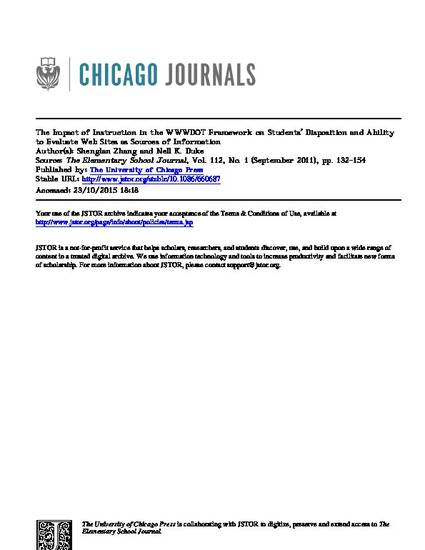
Much research has demonstrated that students are largely uncritical users of Web sites as sources of information. Research-tested frameworks are needed to increase elementary-age students’ awareness of the need and ability to critically evaluate Web sites as sources of information. This study is a randomized field trial of such a framework called WWWDOT. A matched-pair design involving 12 grade 4 and 5 classes was adopted. Data were collected through 3 assessments administered before and after the intervention: a questionnaire, a Single Web Site Evaluation Task, and a Web Site Ranking Task. ANCOVA and ordinal regression analyses reveal that students taught the WWWDOT framework became more aware of the need to evaluate information on the Internet for credibility and were better able to evaluate the trustworthiness of Web sites on multiple dimensions. However, students’ overall judgment and ranking of the relative trustworthiness of Web sites was not improved.
Available at: http://works.bepress.com/shenglan_zhang/4/

This article is from The Elementary School Journal 112 (2011): 132–154, doi:10.1086/660687. Posted with permission.